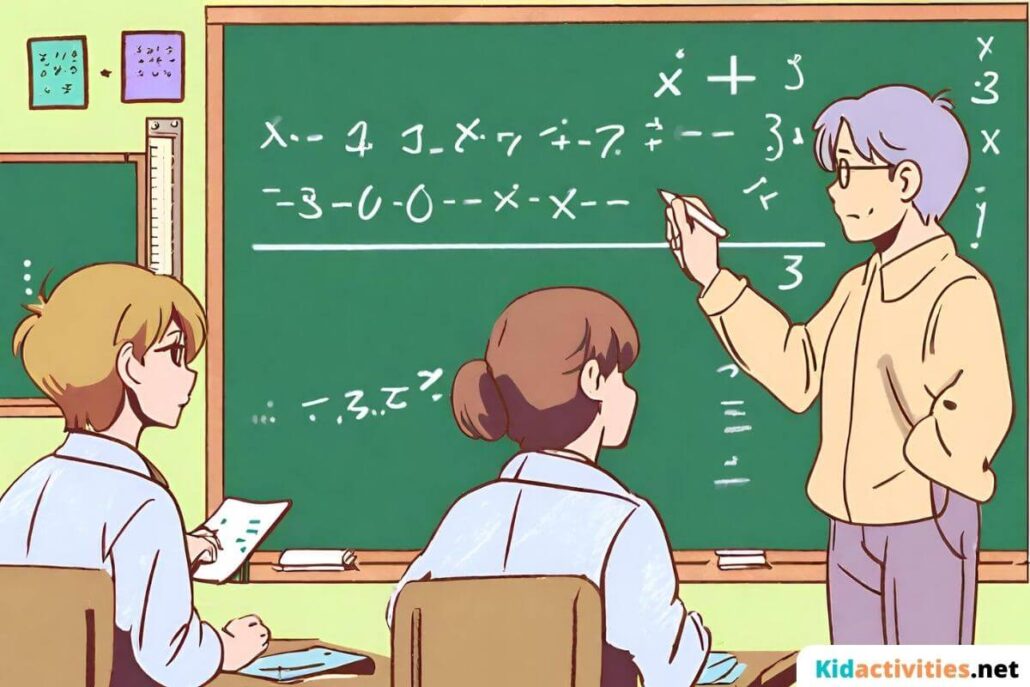Math plays a really big role in a kid’s education. Maths teach them valuable problem-solving skills that extend far beyond the classroom. Students’ analytical thinking and logical reasoning skills are questioned as they progress through their academic careers.
Two-step word problems are one of these challenges, which bridge simple arithmetic with more advanced ones.
The 3rd grade is full of exciting math adventures as students tackle two-step word problems. This kind of maths activity demands learners to think ahead solving equations and instead take part in a more thorough thinking process.
Third-graders learn how to solve problems by combining numerous procedures, such as addition, subtraction, multiplication, and division.
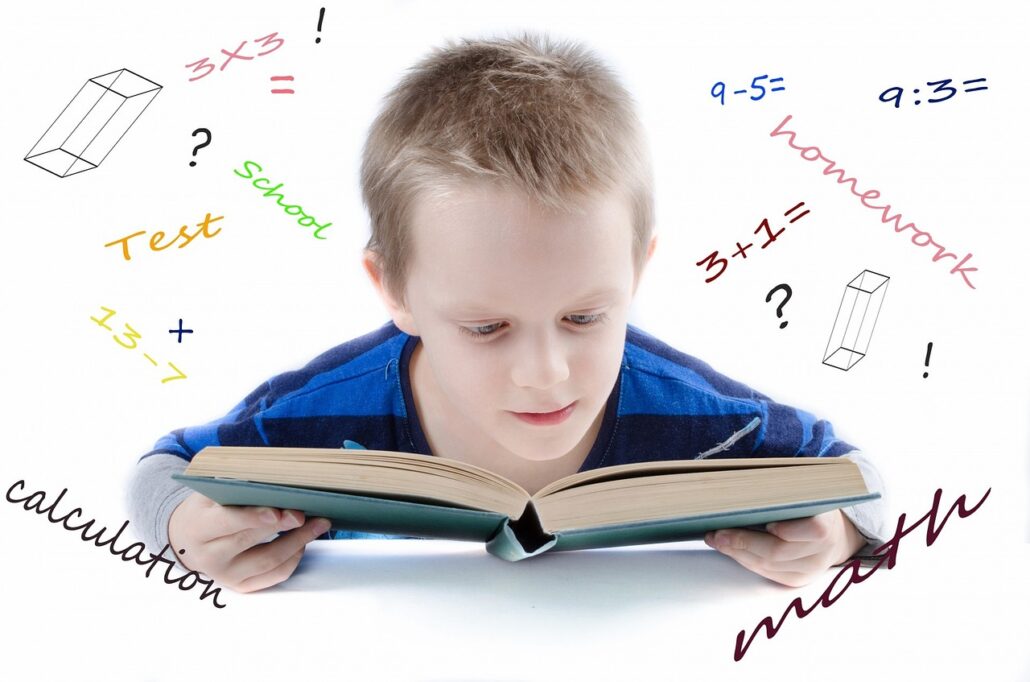
In this article, we will examine 25 carefully crafted two-step word problems designed specifically for students in third grade. Those well-crafted two-word problems are designed to student’s critical thinking skills, encourage mathematical reasoning, and develop their analytical and problem-solving skills.
Practicing these 2-step word problems in 3rd grade will not only enhance their mastery of basic numerics, but also enhance their decision-making talents, sharpen their analytical sense, and grow a love for the world of maths. Through the step-by-step analysis of each problem, scholars will acquire confidence and learn how to tackle difficult situations.
If you are a parent, or a teacher, or even if you are a students who looks for ways to enhance your problem-solving activities the maths problems that you’ll find in this article will serve as a great solution.
Come along on this mathematical journey, unravel the complexities of two-step word problems, and empower 3rd-graders to become problem solvers.
List of Two-Step Problems for 3rd Grade Students
1. Emma has 8 stickers. She gave 3 stickers to her friend. How many stickers does she have now?

To solve this problem, we need to subtract the number of stickers Emma gave to her friend from the total number of stickers she had initially.
Given that Emma has 8 stickers and she gave 3 stickers to her friend, we can represent this situation using subtraction: 8 – 3.
Subtraction is the process of taking away a particular amount from a larger amount to discover the difference or remaining amount. In this case, we are subtracting 3 stickers from the first total of 8 stickers.
Starting with the number 8, we can mentally imagine the stickers and remove 3 of them. After removing 3 stickers, we count the remaining stickers, which gives us the solution.
8 – 3 = 5
Therefore, Emma has 5 stickers left after giving 3 stickers to her friend.
In more detail, imagine Emma has a collection of 8 stickers. She chooses to be generous and gives 3 stickers to her friend. In order to find out how many stickers she has left, we remove the number of stickers given away from the total digit of stickers.
Starting with the number 8, we mentally count backward by 3: 8, 7, 6, 5. After counting down three times, we arrive at the number 5, which represents the remaining stickers.
So, the answer is that Emma has 5 stickers left.
In summary, by subtracting the number of stickers given away from the total number of stickers, we find that Emma has 5 stickers remaining. This problem introduces the concept of subtraction and helps students practice mental subtraction within 10, reinforcing their understanding of basic arithmetic operations.
2. There are 15 students in the class. If 6 students are absent, how many students are present?
Given that there are 15 students in the class and 6 students are absent, we can represent this situation using subtraction: 15 – 6.
Subtraction is the process of taking away a certain quantity from a larger quantity to find the difference or remaining amount. In this case, we are subtracting 6 absent students from the initial total of 15 students.
Starting with the number 15, we can mentally imagine the students and remove 6 of them who are absent. After removing the absent students, we count the remaining students, which gives us the solution.
15 – 6 = 9
Therefore, there are 9 students present in the class when 6 students are absent.
In more detail, imagine a classroom with 15 students. Today, 6 students are away from the class, meaning they are not currently present in the classroom. To find out the number of pupils who are currently present in class, we subtract the digit of missing students from the total number of students.
Starting from the initial number of 15, we calculate backward by 6: 15, 14, 13, 12, 11, 10, 9. After counting down six times, we arrive at the number 9, which represents the number of students currently present in the classroom.
So, the answer is that 9 learners are attending the class when 6 students are away.
This problem introduces the concept of subtraction and helps students practice mental subtraction within 20, reinforcing their understanding of basic arithmetic operations.
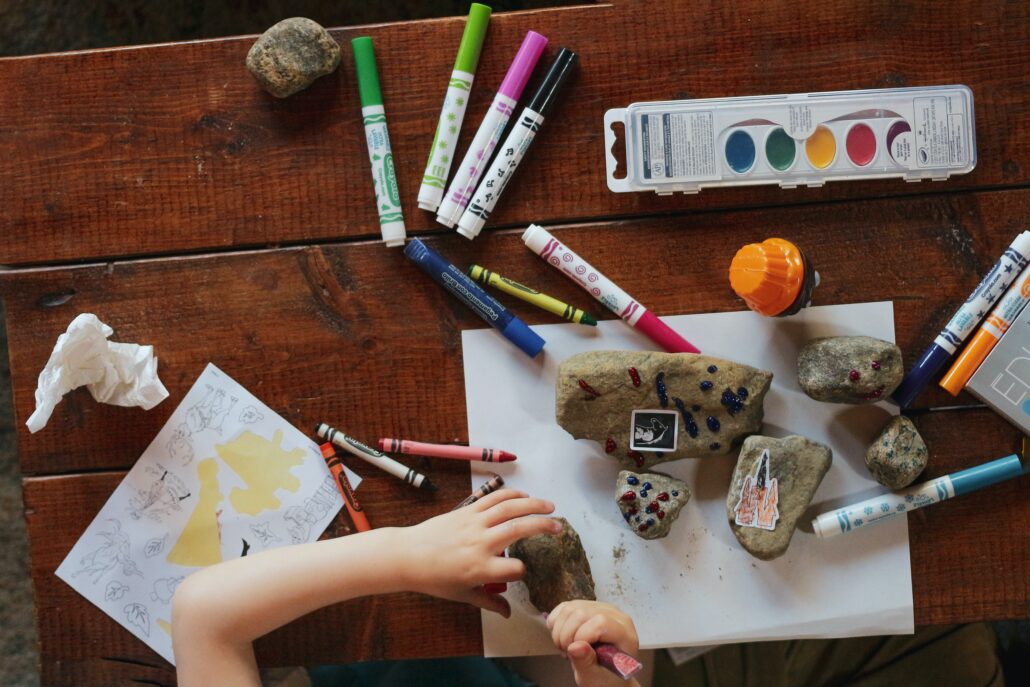
3. Sarah has 10 apples. She eats 3 apples and gives 2 apples to her brother. How many apples does Sarah have left?
To determine how many apples Sarah has remained, we can subtract the amount she ate and the amount she gave to her brother from the total number she had initially.
If Sarah originally had 10 apples, but ate 3 and gave 2 to her brother, we can use subtraction to represent the situation as 10 – 3 – 2.
Subtraction is the process of taking away a certain quantity from a larger quantity to find the difference or remaining amount. In this case, we are subtracting 3 apples Sarah ate and 2 apples she gave away from the initial total of 10 apples.
Starting with the number 10, we can mentally imagine the apples and subtract 3 from the ones Sarah ate. Then we subtract another 2 for the ones she gave to her brother. After subtracting these quantities, we count the remaining apples, which gives us the solution.
10 – 3 – 2 = 5
Therefore, Sarah has 5 apples left after eating 3 apples and giving 2 apples to her brother.
In more detail, Sarah begins with 10 apples. She decides to eat 3 of them, so we subtract 3 from the total: 10 – 3 = 7. After eating 3 apples, Sarah is left with 7 apples. Additionally, she gives 2 apples to her brother, so we subtract another 2: 7 – 2 = 5. After giving away 2 more apples, Sarah is left with 5 apples.
So, the answer is that Sarah has 5 apples left after eating 3 apples and giving 2 apples to her brother.
This exercise enhances the understanding of subtraction and allows students to practice mental subtraction up to 20. It also promotes critical thinking and comprehension of how quantities change through actions.
4. There are 18 pencils in a box. If 7 pencils are taken out, how many pencils are left?
The basing goal of the problem is to find the number of pencils that are still inside the box by subtracting the number of pencils that are taken out.
We can represent this situation using subtraction since there are 18 pencils in the box and 7 pencils are removed: 18 – 7.
Subtraction involves subtracting a specific quantity from a larger quantity to determine the difference or remaining amount. In this case, we are subtracting the 7 pencils taken out from the initial total of 18 pencils.
Starting with the number 18, we mentally imagine the pencils in the box and remove 7 of them that were taken out. After subtracting these pencils, we count the remaining pencils to obtain the solution.
18 – 7 = 11
Therefore, there are 11 pencils left in the box after 7 pencils are taken out.
In further detail, imagine a box containing 18 pencils. The 18 pencils can be subtracted from the total by 7 if 7 pencils are removed from the box: 18 – 7 = 11. The box contains 11 pencils after subtracting the 7 that were taken out.
Therefore, after taking out seven pencils, there are 11 left in the box.
This problem reinforces the concept of subtraction and helps students practice mental subtraction within 20, developing their ability to determine the remaining quantity after some items are removed from a given total.
5. Jenny has 24 candies. She shares them equally among 4 friends. How many candies does each friend get?
In order to identify the number of candies that each friend will take, we must divide the total number of candies that Jenny possesses by the number of friends she intends to share them with. Given that Jenny has 24 candies and she wants to share them equally among 4 friends, we can represent this situation using division: 24 ÷ 4.
The division is the process of dividing a quantity into equal parts or groups. In this case, we are dividing the 24 candies Jenny has among 4 friends to find out how many candies each friend will receive.
Dividing 24 candies equally among 4 friends means each friend will receive the same number of candies.
24 ÷ 4 = 6
Therefore, each friend will receive 6 candies.
In more detail, Jenny starts with 24 candies. She wants to share them equally among her 4 friends. To determine the number of candies that each friend will receive, divide the total number of candies (24) by the number of friends (4). Dividing 24 candies equally among 4 friends results in each friend receiving 6 candies.
So, the answer is that each friend will receive 6 candies when Jenny shares her 24 candies equally among 4 friends.
This activity teaches students how to divide quantities equally, which promotes fair sharing and helps them develop their mathematical reasoning skills. It also presents the procedure known as division.
6. A bakery sold 32 cupcakes in the morning and 18 cupcakes in the afternoon. How many cupcakes did they sell in total?
To understand how many cupcakes the bakery traded in full, we ought to add the number of cupcakes sold in the morning to the number sold in the afternoon. The bakery sold 32 cupcakes in the morning and 18 in the afternoon, which means we can use the additional procedure to find out the total: 32 + 18.
Addition is the process of connecting or adding amounts together to find the total or sum. In this circumstance, we should add the 32 cupcakes sold in the morning to the 18 cupcakes sold in the afternoon to calculate the total number of cupcakes sold.
Beginning with the number 32, we think that the cupcakes are sold in the morning, and then we add the 18 cupcakes that have been sold in the afternoon. After mixing those two numbers we can find our solution.
32 + 18 = 50
Therefore, the bakery sold a total of 50 cupcakes.
In more detail, the bakery begins by selling 32 cupcakes in the morning. Then, in the afternoon, they sell an additional 18 cupcakes. To find the total number of cupcakes sold, we add the quantity sold in the morning (32) to the quantity sold in the afternoon (18). Adding these numbers together results in a total of 50 cupcakes sold.
So, the answer is that the bakery sold a total of 50 cupcakes when they sold 32 cupcakes in the morning and 18 cupcakes in the afternoon.
This activity aims to strengthen students’ understanding of addition and enhance their mental math skills within 100. It focuses on the concept of combining quantities to arrive at a total.

7. Peter has 12 marbles. He lost 5 marbles while playing. How many marbles does he have now?
To find the number of marbles Peter has left, we need to subtract the number of marbles he lost from the initial total.
Given that Peter has 12 marbles and he lost 5 marbles while playing, we can represent this situation using subtraction: 12 – 5.
Subtraction involves removing a specific quantity from a larger quantity to find the difference or remaining amount. In this case, we are subtracting the 5 marbles Peter lost from the initial total of 12 marbles.
Starting with the number 12, we mentally imagine the marbles and subtract 5 for the ones Peter lost. After subtracting these marbles, we count the remaining marbles to obtain the solution.
12 – 5 = 7
Therefore, Peter has 7 marbles left after losing 5 marbles while playing.
In more detail, Peter initially has 12 marbles. While playing, he loses 5 marbles. To manage and calculate how many marbles he has left, we subtract the digit of marbles lost (5) from the beginning total (12). Subtracting 5 marbles from 12 marbles results in Peter having 7 marbles remaining.
So, the answer is that Peter has 7 marbles left after losing 5 marbles while playing.
8. In a toy store, there are 25 teddy bears and 16 dolls. How many toys are there in total?
To determine the total number of toys in the toy store two-word problem, we just add the number of teddy bears (25) to the number of dolls (16).
Given that there are 25 teddy bears and 16 dolls, we can describe this situation using the addition process: 25 + 16.
Addition involves combining or adding quantities together to find the total or sum. In this case, we are adding the 25 teddy bears to the 16 dolls to determine the total number of toys.
Starting with the number 25, we mentally imagine the teddy bears in the store and then add the 16 dolls. After combining these quantities, we arrive at the solution.
25 + 16 = 41
Therefore, there are a total of 41 toys in the toy store when there are 25 teddy bears and 16 dolls.
In more detail, the toy store has 25 teddy bears and 16 dolls. To find the total number of toys, we add the number of teddy bears (25) to the number of dolls (16). Adding these numbers together results in a total of 41 toys.
So, the answer is that there are 41 toys in total when there are 25 teddy bears and 16 dolls in the toy store.
This problem reinforces the concepts of subtraction and addition, helping students practice mental calculations and develop their arithmetic skills within 20 and 100, respectively.
9. A pizza has 8 slices. If 3 slices are eaten, how many slices are left?
To determine the amount of pizza slices left, we need to use the process of subtraction.
Given that a pizza has 8 slices and 3 slices are eaten, we can represent this situation using subtraction: 8 – 3.
Subtraction applies the process of removing a specific quantity from a bigger quantity to find the difference or remaining amount. In this case, we are subtracting the 3 slices eaten from the initial total of 8 slices.
Starting with the number 8, we mentally imagine the pizza and subtract 3 from the slices that have been eaten. After subtracting these slices, we count the remaining slices to obtain the solution.
8 – 3 = 5
Therefore, there are 5 slices left.
In more detail, imagine a pizza with 8 slices. If 3 slices are consumed, we subtract 3 from the total: 8 – 3 = 5. After removing the 3 slices that have been eaten, we can easily find that there are 5 slices remaining in the box.
So, the answer is that there are 5 slices left when 3 slices are eaten from a pizza that originally had 8 slices.
This problem introduces the concept of subtraction and helps students practice mental subtraction within 10, emphasizing the idea of taking away a quantity from a given total to find the remaining amount.
10. Emma saved $20 last month and earned $12 from her chores this month. How much money does she have in total?
To understand how much money Emma has in total, we need to add the amount she saved last month to the amount she earned from her chores this month.
Given that Emma saved $20 last month and earned $12 from her chores this month, we can represent this situation using the addition: $20 + $12.
Addition is the process of combining or adding quantities together to find the total or sum. In this case, we are adding the $20 saved last month to the $12 earned from chores this month to determine the total amount of money Emma has.
Starting with the amount of $20, we mentally imagine the money saved last month, and then we add the $12 earned from chores this month. After combining these amounts, we arrive at the solution.
$20 + $12 = $32
Therefore, Emma has a total of $32.
In more detail, Emma saved $20 last month and earned an additional $12 from her chores this month. To be able and calculate how much money she has in total in her pocket, we add the amount of money saved last month ($20) to the amount earned from chores this month ($12). Adding these amounts together results in a total of $32.
So, the answer is that Emma has $32 in total when she saved $20 last month and earned $12 from her chores this month.
This problem supports the concept of addition and helps students practice mental addition, emphasizing the idea of combining amounts to find a total.
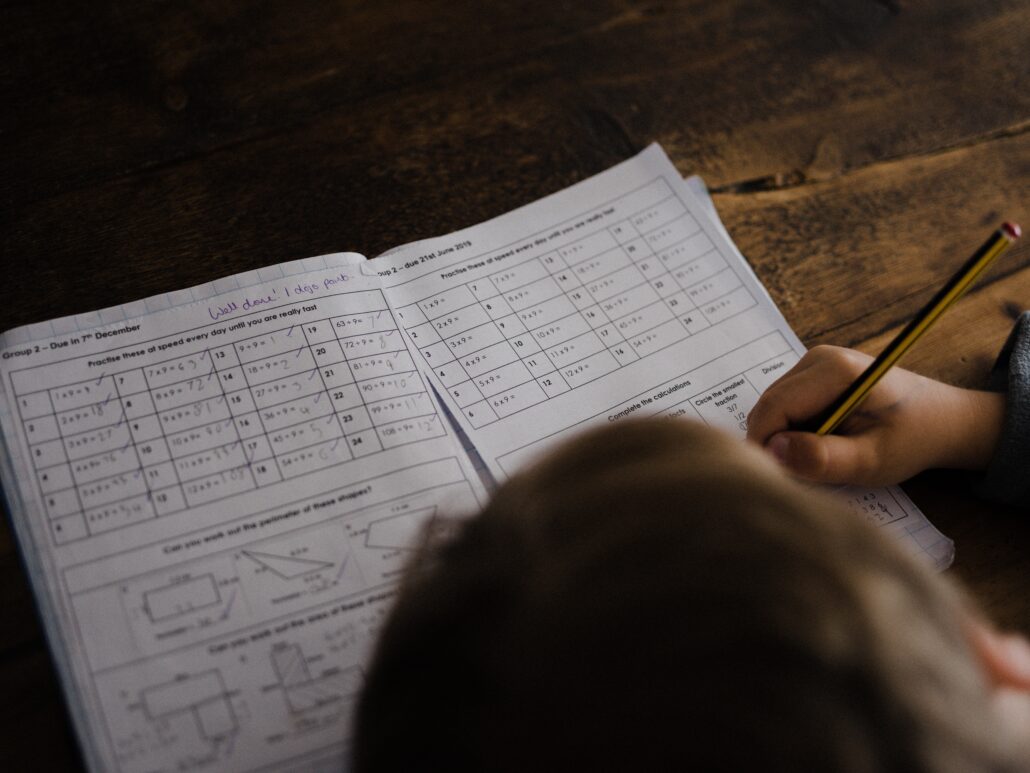
11. There are 36 students in a class. If 10 students are girls, how many students are boys?
To calculate the number of boys in the class, we should be able to subtract the number of girls from the whole number of students.
Given that there are 36 students in the class and 10 of them are girls, we can solve the two-word problem by using the process of subtraction: 36 – 10.
Subtraction applies by removing a particular number from a larger quantity to find the difference or remaining amount. In this case, we are subtracting the 10 girls from the total of 36 students to identify the number of boys.
Starting with the number 36, we mentally imagine the students in the class and subtract the 10 girls. After subtracting these students, we count the remaining students, which will give us the number of boys.
36 – 10 = 26
Therefore, there are 26 boys in the class.
To make it even more specific, think of a class with 36 students. If 10 students are girls, we subtract the number of girls (10) from the whole number of students (36): 36 – 10 = 26. After subtracting the 10 girls, we find that 26 boys are remaining in the class.
So, the solution is easy, as we can now see that 26 boys are in the class when there are 36 students and 10 of them are girls.
This problem introduces the concept of subtraction and helps students practice mental subtraction within 100, emphasizing the idea of taking away a quantity from a given total to find the remaining amount.
12. Laura read 15 pages of a book on Monday and 12 pages on Tuesday. How many pages did she read in total?
To find the whole digit of pages Laura read, we must add the number of pages she read on Monday to the number of pages she read on Tuesday.
To illustrate Laura’s reading progress, we can use addition since she read 15 pages on Monday and 12 pages on Tuesday. Therefore, her total pages read would be 15 + 12. Addition is the process of combining or adding quantities together to find the total or sum. In this case, we are adding the 15 pages Laura read on Monday to the 12 pages she read on Tuesday to determine the total number of pages read.
Starting with the number 15, we mentally imagine the pages Laura read on Monday, and then we add the 12 pages she read on Tuesday. After combining these quantities, we arrive at the solution.
15 + 12 = 27
Therefore, Laura read a total of 27 pages.
In more detail, Laura read 15 pages of a book on Monday and an additional 12 pages on Tuesday. To find the total number of pages she read, we add the number of pages read on Monday (15) to the number of pages read on Tuesday (12). Adding these numbers together results in a total of 27 pages read.
So, the answer is that Laura read a total of 27 pages when she read 15 pages on Monday and 12 pages on Tuesday.
This problem reinforces the concept of addition and helps students practice mental addition, emphasizing the idea of combining quantities to find a total.
13. There are 24 red balloons and 18 blue balloons. How many balloons are there in total?
In order to determine the total number of balloons, we simply need to add the number of red balloons to the number of blue balloons. Specifically, we are given that there are 24 red balloons and 18 blue balloons, and we can represent this situation using the addition: 24 + 18.
The addition is the process of combining quantities to find the sum, and in this case, we are adding the 24 red balloons to the 18 blue balloons to determine the total number of balloons.
Starting with the number 24, we mentally imagine the red balloons, and then we add the 18 blue balloons. After combining these quantities, we arrive at the solution.
24 + 18 = 42
Therefore, there are a total of 42 balloons.
To be more specific, there are 24 red balloons and 18 blue balloons. To determine the total number of balloons, we simply add the number of red balloons (24) to the number of blue balloons (18), which equals 42 balloons in total.
So, the answer is that there are 42 balloons in total when there are 24 red balloons and 18 blue balloons.
This problem reinforces the concept of addition and helps students practice mental addition, emphasizing the idea of combining quantities to find a total.

14. A box contains 45 pencils. If 27 pencils are taken out, how many pencils are left in the box?
To determine the number of pencils left in the box, we need to subtract the number of pencils taken out from the initial total.
Given that there are 45 pencils in the box and 27 pencils are taken out, we can represent this situation using subtraction: 45 – 27.
Subtraction implicates removing a particular number from a larger quantity to understand the difference or staying amount. In this case, we are subtracting the 27 pencils taken out from the initial total of 45 pencils to determine the number of pencils left.
Starting with the number 45, we mentally imagine the pencils in the box and subtract the 27 pencils that have been taken out. After subtracting these pencils, we count the remaining pencils to obtain the solution.
45 – 27 = 18
Therefore, there are 18 pencils left in the box.
In more detail, imagine a box with 45 pencils. When 27 pencils are removed from a box that initially had 45 pencils, we need to subtract the number of pencils taken out (27) from the original total (45).
This gives us the equation 45 – 27 = 18, which means that there are now 18 pencils left in the box.
This problem teaches the concept of subtraction and encourages mental subtraction within 100. It emphasizes the importance of taking away a quantity from a given total to determine the remaining amount.
15. Sarah has 10 stickers. She gave away half of them. How many stickers does she have left?
To determine the number of stickers Sarah has left, we need to calculate half of the initial number of stickers and subtract that from the initial total.
Given that Sarah has 10 stickers and she gave away half of them, we can represent this situation using the concept of division and subtraction.
First, we find half of the initial number of stickers by dividing it by 2: 10 ÷ 2 = 5.
Sarah gave away 5 stickers, so to find the number of stickers she has left, we subtract the number of stickers given away from the initial total: 10 – 5 = 5.
Therefore, Sarah has 5 stickers left.
In more detail, Sarah initially has 10 stickers. Since she gave away half of them, we divide the initial number of stickers by 2 to find that half of 10 is 5. Thus, she gave away 5 stickers. To find the number of stickers she has left, we subtract the 5 stickers given away from the initial total of 10, resulting in 5 stickers remaining.
So, the answer is that Sarah has 5 stickers left after giving away half of her initial 10 stickers.
This problem introduces the concepts of division and subtraction, helping students practice dividing by 2 and subtracting quantities from a given total to find the remaining amount.
16. There are 16 seats in a row. If 8 people are already seated, how many seats are still available?
In order to know how many seats are left, we have to subtract the number of people already sitting from the total number of seats. Let’s say there are 16 seats in a row and 8 people are already sitting. We can use subtraction to show this: 16 – 8.
The process of removing a certain number from a bigger quantity to find the difference or remaining number is called subtraction. In this scenario, we are subtracting the 8 people who are already sitting from the total of 16 seats to discover the number of seats that are still available.
Starting with the number 16, we mentally imagine the seats in the row and subtract the 8 people already seated. After subtracting these people, we count the remaining seats to obtain the solution.
16 – 8 = 8
Therefore, there are 8 seats still available.
In more detail, imagine a row with 16 seats. If there are 16 seats in a row and 8 people have already taken their seats, you can determine the number of available seats by subtracting the number of people seated (8) from the total number of seats (16).
This gives us 8 seats still available in the row. Therefore, when 8 people are already seated, there are 8 seats available in a row with 16 seats.
This problem introduces the concept of subtraction and helps students practice mental subtraction within 20, emphasizing the idea of taking away a quantity from a given total to find the remaining amount.

17. A toy costs $15 and a book costs $8. How much money will you need to buy both the toy and the book?
To determine the cost of purchasing the toy and the book, we need to count up their prices. The toy costs $15 and the book costs $8, so we can use addition to represent this situation: $15 + $8. The addition is the process of connecting or adding amounts to find the whole or sum.
In this case, we are adding the price of the toy ($15) and the price of the book ($8) to get the total amount of money needed. We start with $15, imagine the price of the toy, then add $8 to the price of the book.
After merging these amounts, we get the solution: $15 + $8 = $23. Therefore, you need $23 in total to buy both the toy and the book.
In summary, if the toy costs $15 and the book costs $8, you count these costs together: $15 + $8 = $23, which is the total amount of money needed to buy both items.
So, the answer is that you will need $23 in total to buy both the toy and the book.
This problem reinforces the concept of addition and helps students practice adding monetary values, emphasizing the idea of combining prices to find a total cost.
18. There are 30 students in a class. If 12 students are absent, how many students are present?
To determine the number of students present in the class, we need to subtract the number of absent students from the total number of students.
In a class of 30 students, 12 students are absent. We can use subtraction to represent this situation: 30 – 12.
Subtraction is the process of removing a precise amount from a larger amount to find the difference or remaining amount. In this case, we are subtracting the 12 absent students from the total of 30 students to determine the number of students present.
Starting with the number 30, we mentally imagine the students in the class and subtract the 12 absent students. After subtracting these students, we count the remaining students to obtain the solution.
30 – 12 = 18
Therefore, there are 18 students present in the class.
Let’s say there is a class with 30 students. If 12 students are not present, we can find out how many students are actually in a class by subtracting the number of absent students (12) from the total number of students (30). So, 30 – 12 = 18. Therefore, there are 18 students present in the class after subtracting the 12 absent students. So, the answer is that there are 18 students present in the class when there are initially 30 students and 12 of them are absent.
This problem introduces the concept of subtraction and helps students practice mental subtraction within 100, emphasizing the idea of taking away a quantity from a given total to find the remaining amount.
19. A bag contains 20 candies. If 6 candies are eaten, how many candies are left in the bag?
To identify how many candies are still inside the bag, we have to subtract the number of candies that were eaten from the original total. In this case, there were 20 candies in the bag and 6 were eaten, so we can utilize the subtraction formula: 20 – 6 = 14.
Subtraction means removing a specific amount from a bigger amount to get the difference or the remaining number. We subtracted the 6 candies eaten from the starting total of 20 candies to understand the number of candies left. We can easily think that the candies in the bag start with 20, then subtract the 6 that were eaten, and measure the remaining candies to get the solution. Therefore, there are 14 candies left in the bag.
In more detail, imagine a bag with 20 candies. To find out how many candies are left in the bag after 6 have been eaten, we subtract the number of candies eaten (6) from the initial total (20): 20 – 6 = 14. Therefore, there are 14 candies left in the bag.
So, the answer is that there are 14 candies left in the bag when there are initially 20 candies and 6 of them are eaten.
This problem introduces the concept of subtraction and helps students practice mental subtraction within 100, emphasizing the idea of taking away a quantity from a given total to find the remaining amount.
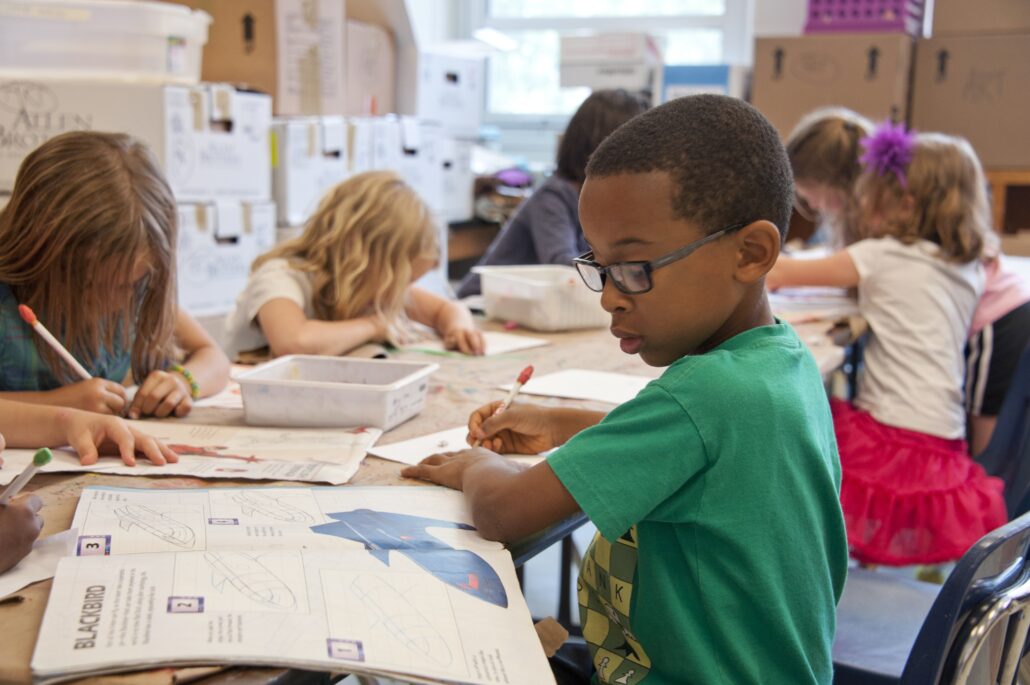
20. Emma has 18 seashells, and her brother has 10 seashells. How many seashells do they have in total?
Emma and her brother are seashell lovers and we want to identify how many seashells they have together at this point. If we want to determine the total number of seashells they have together we need to add the number of seashells that Emma has to the number of seashells that her brother has.
Emma has 18 seashells, and her brother has 10 seashells. We can solve this problem by using addition, which is a process of combining quantities to determine the total or sum.
In this case, we add the number of seashells Emma has (18) to the number of seashells her brother has (10) to find the total number of seashells. We mentally imagine the seashells Emma has and then add her brother’s seashells.
The solution is 28, which is the combined total of seashells that Emma and her brother have. In summary, Emma has 18 seashells and her brother has 10 seashells.
To find the total number of seashells they have together, we add Emma’s seashells (18) and her brother’s seashells (10): 18 + 10 = 28.
So, the answer is that they have a total of 28 seashells while Emma has 18 seashells and her brother has 10 seashells.
This problem reinforces the concept of addition and helps students practice mental addition, emphasizing the idea of combining quantities to find a total.
21. A farmer had 32 eggs. Out of those, 12 eggs hatched into chicks. How many eggs are left?
To determine the number of eggs left, we need to subtract the number of hatched eggs from the initial total.
Given that the farmer had 32 eggs and 12 eggs hatched into chicks, we can represent this situation using subtraction: 32 – 12.
Subtraction involves taking away a certain quantity from a larger quantity to find the difference or remaining amount. In this case, we are subtracting the 12 hatched eggs from the initial total of 32 eggs to determine the number of eggs left.
Starting with the number 32, we mentally imagine the eggs the farmer had and subtract the 12 eggs that hatched. After subtracting these eggs, we count the remaining eggs to obtain the solution.
32 – 12 = 20
Therefore, there are 20 eggs left.
In more detail, imagine a farmer who initially had 32 eggs. Out of those, 12 eggs hatched into chicks. By subtracting the number of hatched eggs (12) from the initial total (32), we find that there are 20 eggs left.
So, the answer is that there are 20 eggs left when the farmer had initially 32 eggs and 12 of them hatched into chicks.
This problem introduces the concept of subtraction and helps students practice mental subtraction within 100, emphasizing the idea of taking away a quantity from a given total to find the remaining amount.
22. There are 15 children in the park. If 5 children leave, how many children are still in the park?
In order to figure out how many children are still in the park, we must subtract the number of children who left from the original total. For example, if there were 15 children in the park and 5 left, we can use subtraction to find out how many are still there: 15 – 5.
Subtraction is the process of removing a certain amount from a larger amount to find the difference or what’s left. So in this case, we subtract the 5 children who left from the original total of 15 to determine how many children are still in the park.
To do this, we start with 15 and mentally imagine the children in the park, then subtract the 5 who left. After that, we count the remaining children to get the answer.
15 – 5 = 10
Therefore, there are 10 children still in the park.
In more detail, imagine a park with 15 children. If 5 children leave, we subtract the number of children who left (5) from the initial total (15): 15 – 5 = 10. After subtracting the 5 children who left, we find that there are 10 children still in the park.
So, the answer is that there are 10 children still in the park when there are initially 15 children and 5 of them leave.
This problem introduces the concept of subtraction and helps students practice mental subtraction within 20, emphasizing the idea of taking away a quantity from a given total to find the remaining amount.
23. Sarah bought a toy for $7 and a book for $5. How much money did she spend in total?
To determine Sarah’s total expenses, we must add up the costs of the toy and the book. The toy cost $7, and the book cost $5. We can use addition to represent this situation: $7 + $5. Addition is the process of combining quantities to find the total.
In this case, we add the cost of the toy ($7) to the cost of the book ($5) to get the total amount spent. We start with $7, imagine the cost of the toy, and then add $5 for the book’s cost. After combining these amounts, we get the solution: $7 + $5 = $12. Therefore, Sarah spent a total of $12.
In more detail, if the toy costs $7 and the book costs $5, we add these amounts together: $7 + $5 = $12. This means that Sarah spent a total of $12 on the toy and the book.
So, the answer is that Sarah spent $12 in total when she bought a toy for $7 and a book for $5.
This problem reinforces the concept of addition and helps students practice adding monetary values, emphasizing the idea of combining costs to find a total expenditure.

24. A box contains 20 cookies. If 8 cookies are taken out, how many cookies are left in the box?
To figure out how many cookies are still in the box, we need to subtract the number of cookies that have been taken out from the original total.
For example, if the box had 20 cookies and 8 were taken out, we would use subtraction: 20 – 8.
Subtraction is the process by which we remove a specific amount from a larger number to understand the difference or remaining quantity. In this case, we are subtracting the 8 cookies that were removed from the starting total of 20 cookies to find out how many are left.
We start with the number 20 and imagine the cookies in the box. Then, we subtract the 8 cookies that have been taken out and count the remaining cookies to find the solution. In this case, the solution is 12 cookies left in the box.
To understand and calculate, if there were 20 cookies in the box and 8 were taken out, we can subtract the known digit of the cookies taken out (8) from the initial-whole number (20): 20 – 8 = 12. After subtracting the 8 cookies that have been taken out, we find that 12 cookies are remaining in the box.
Therefore, the answer is that there are 12 cookies left in the box when there were originally 20 cookies and 8 were taken out.
This problem introduces the concept of subtraction and helps students practice mental subtraction within 100, emphasizing the idea of taking away a quantity from a given total to find the remaining amount.
25. Emma has 32 stickers. She wants to divide them equally into 4 groups. How many stickers will be in each group?
Let’s figure out how many stickers will be in each group by dividing the total number of stickers by the number of groups. Emma has 32 stickers and wants to divide them into 4 equal groups. We represent this situation using division: 32 ÷ 4.
The division is the process of sharing something equally among a certain number of groups or parts. In this case, we are dividing the 32 stickers into 4 groups to find out how many stickers each group will have. When we divide 32 by 4, we get 8.
Therefore, each group will have 8 stickers. To sum up, Emma will have 8 stickers in each of her 4 groups when she divides her 32 stickers equally. This problem is a great way to introduce the concept of division and teach students how to divide quantities into equal parts. It emphasizes the importance of sharing or distributing a quantity equally among a given number of groups.
Solving two-step word problems in the 3rd grade helps learners grow their mathematical thinking, problem-solving skills, and knowledge to apply mathematical conceptions in real-life conditions.
These types of situations need students to conduct numerous operations and consider additional variables to arrive at a resolution. By engaging with these word problems, students enhance their thinking, logical reasoning, and mathematical fluency.
Through the various word problems given, students learn to explore and break down difficult problems into easier and more granular steps. They formulate the mastery to determine the appropriate information, determine the right operations to perform, and apply the appropriate strategies to find the answer.
Additionally, solving word problems encourages students to communicate their thought processes, explain their reasoning, and justify their answers, fostering effective communication and mathematical discourse.
The 25 two-step word maths problems given in this article shows a wide variety of mathematical concepts, such as addition, subtraction, multiplication, and division.
These problems question students to believe flexibly and apply their knowledge in different contexts, promoting a deeper understanding of mathematical operations and their real-world applications.
By practicing these word problems, students build their confidence in tackling multi-step problems and develop a solid foundation for more advanced mathematical concepts they will encounter in later grades.
Solving word problems in the third grade helps students build important life skills beyond mathematics.
